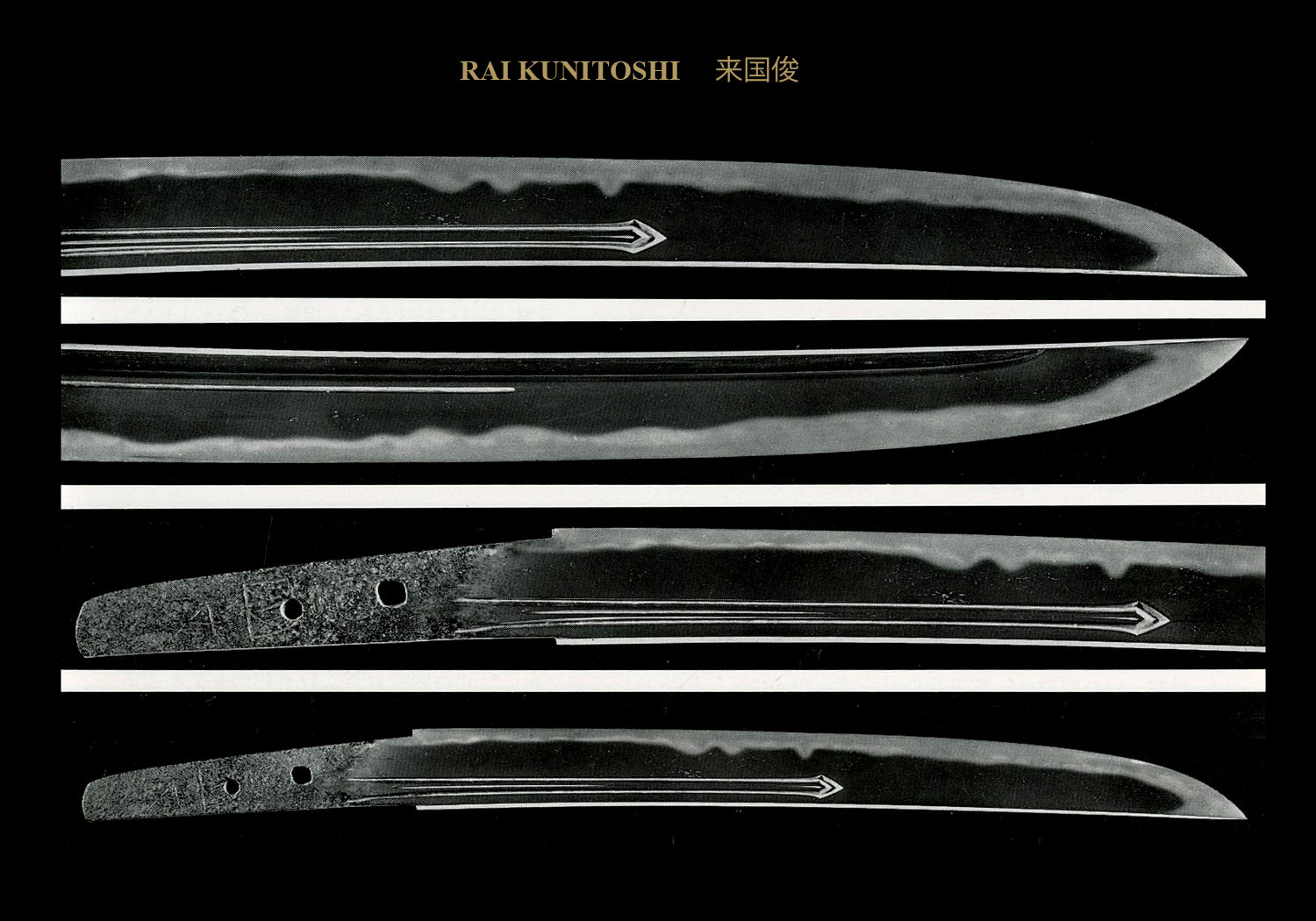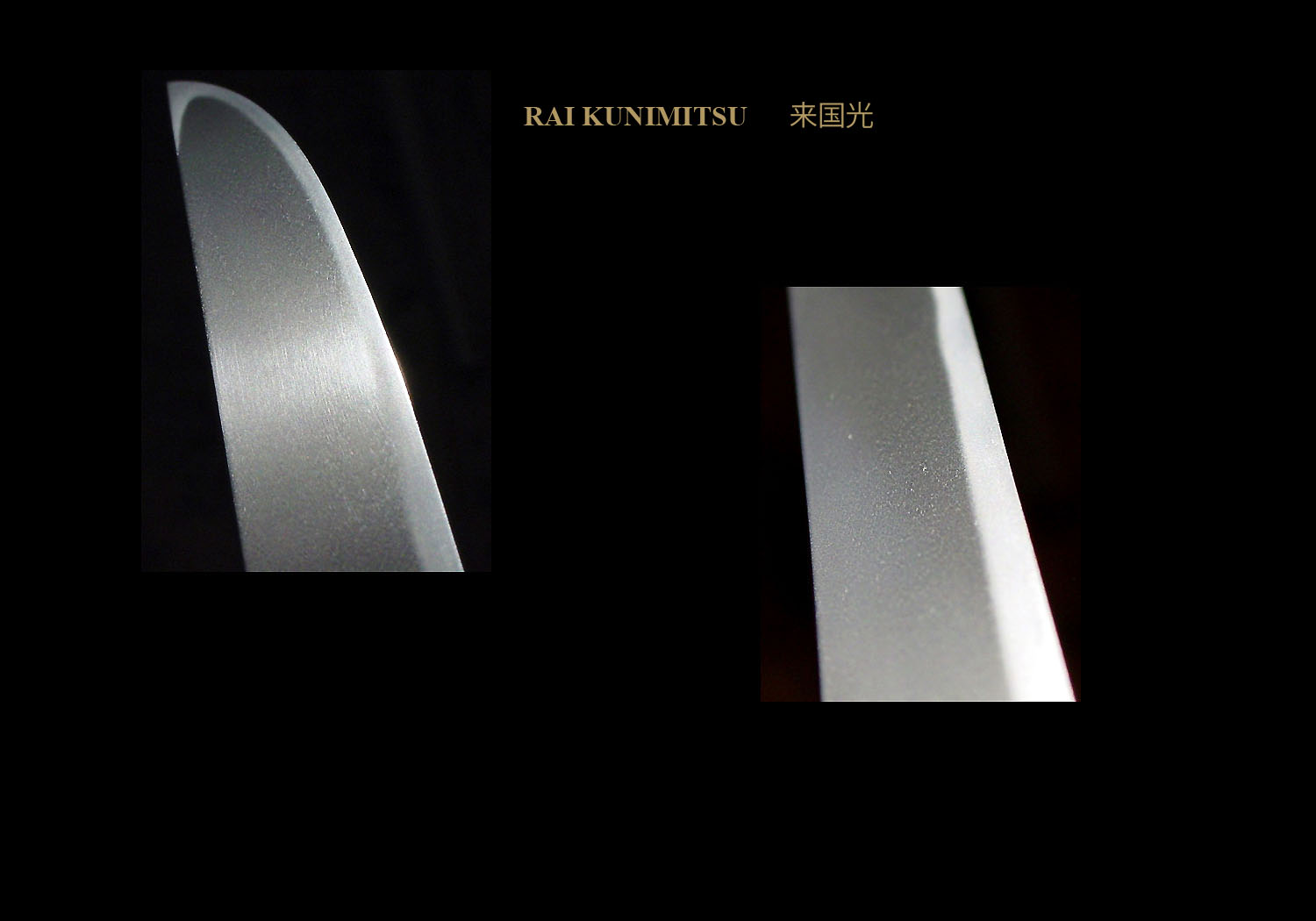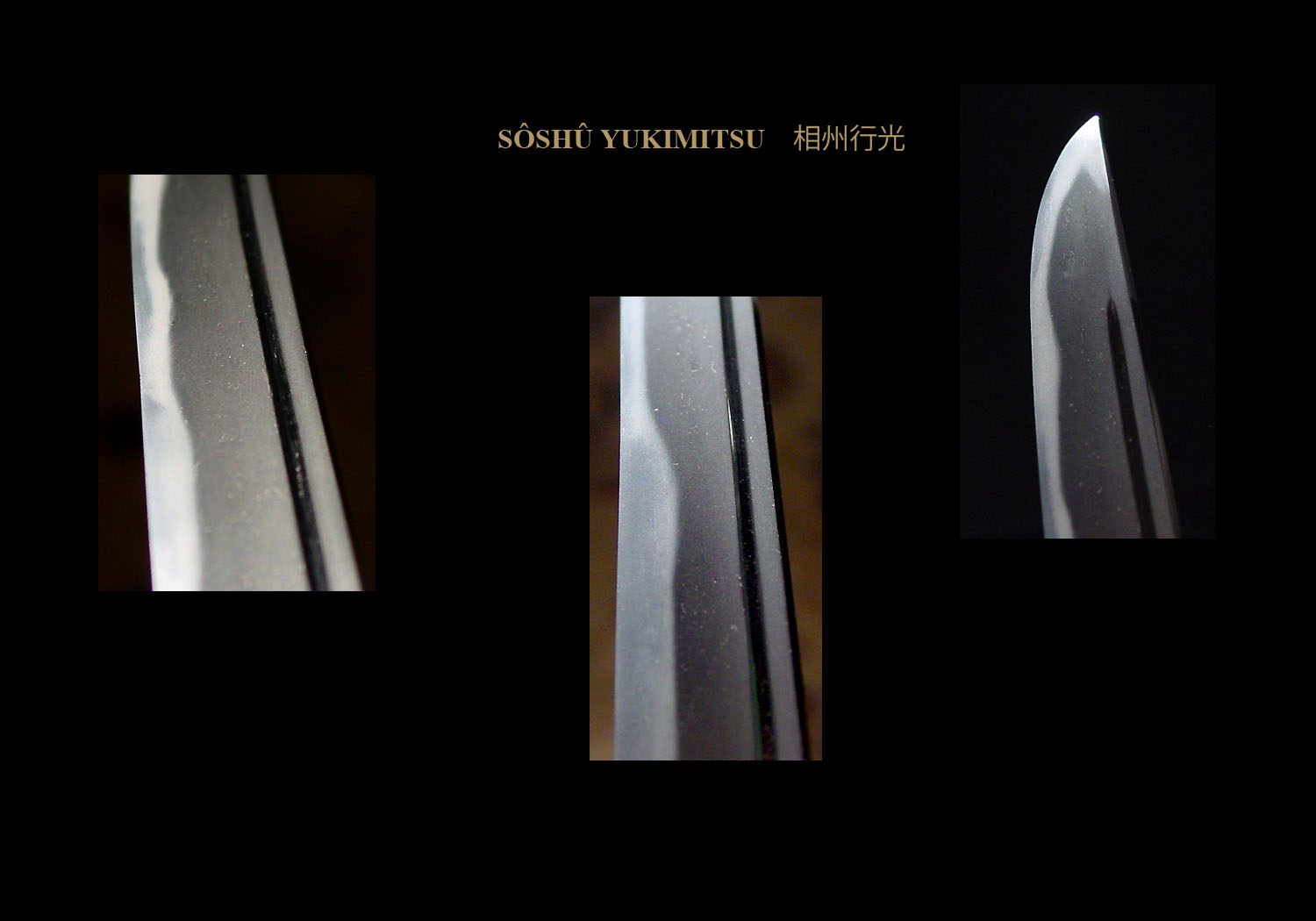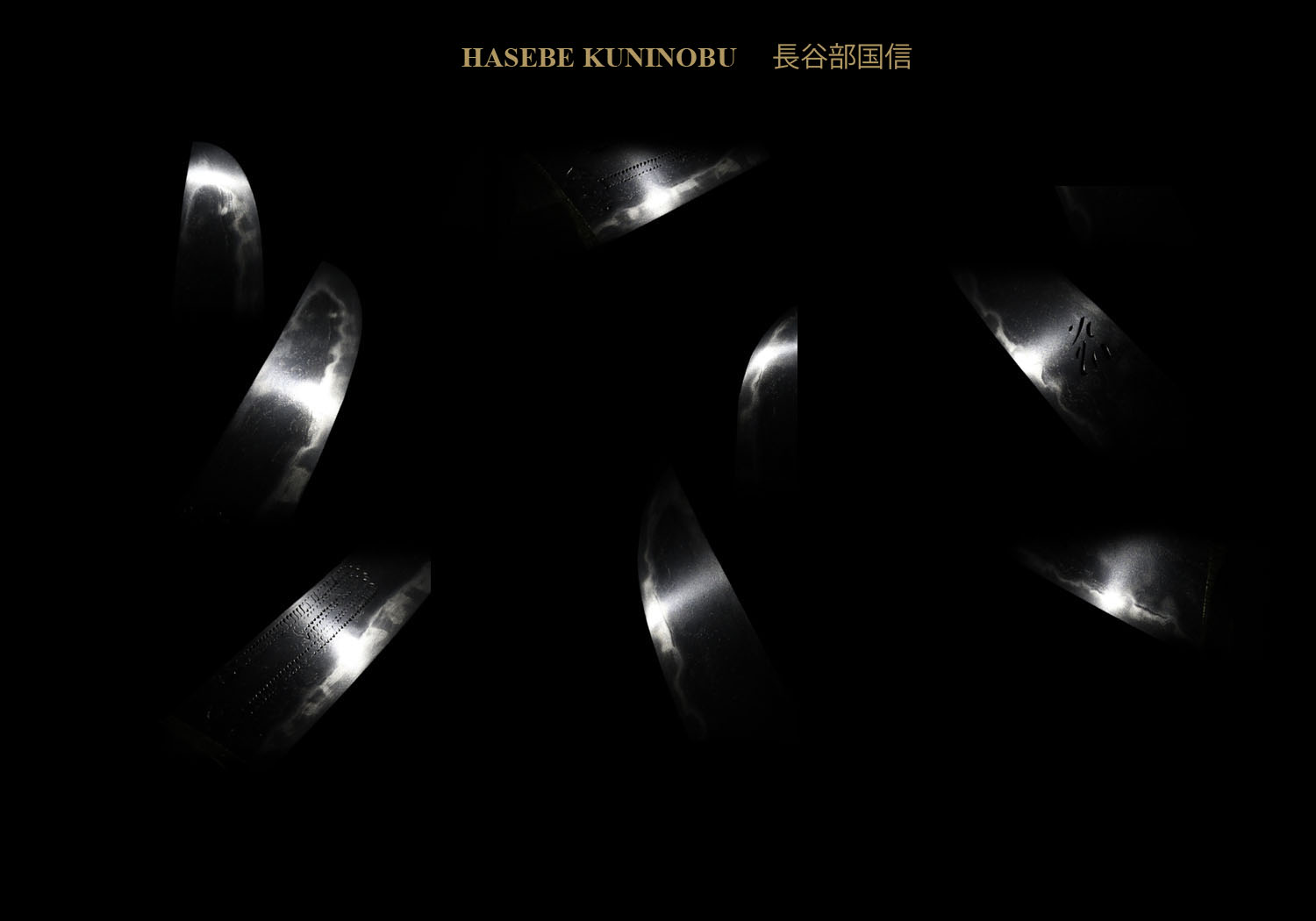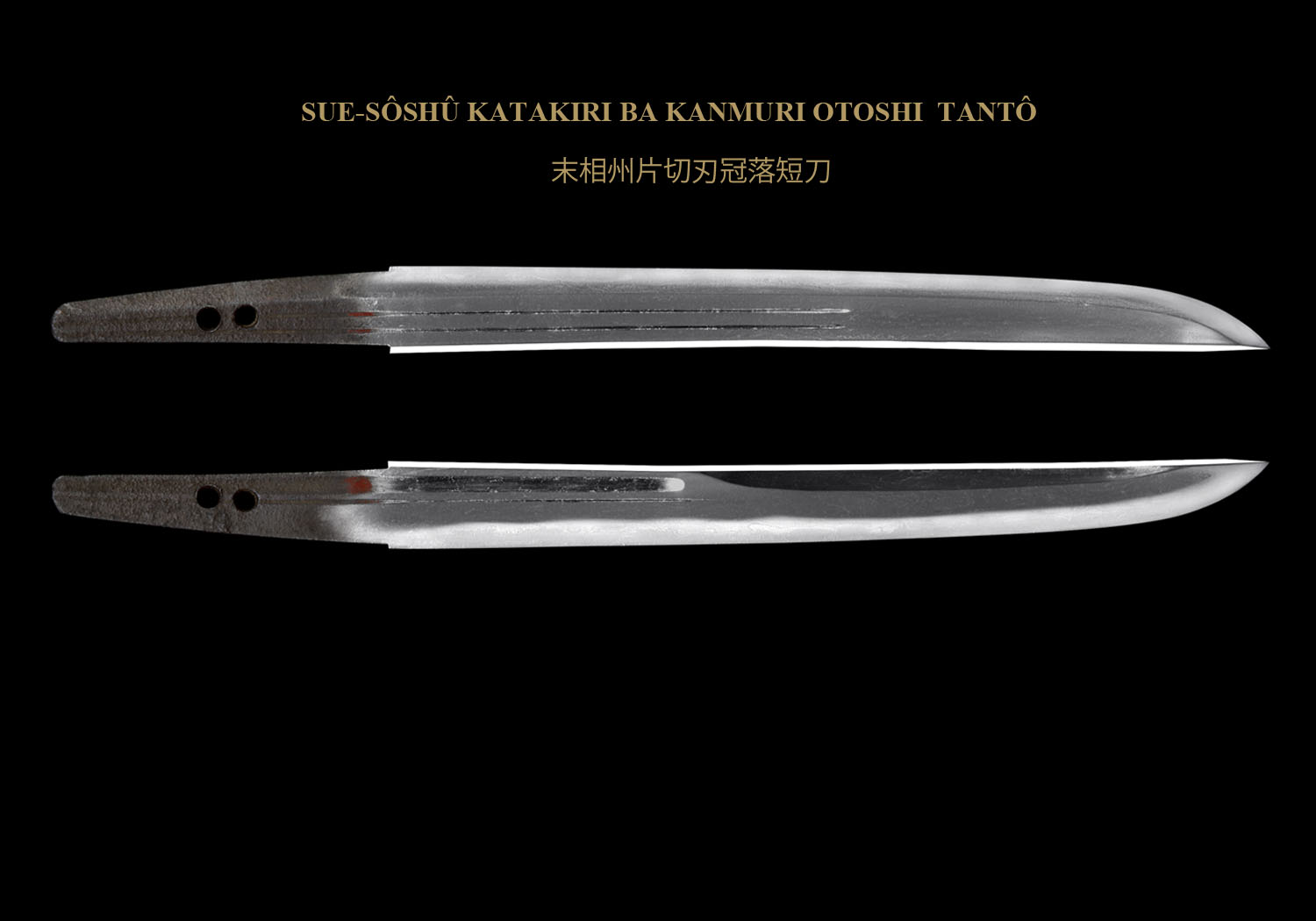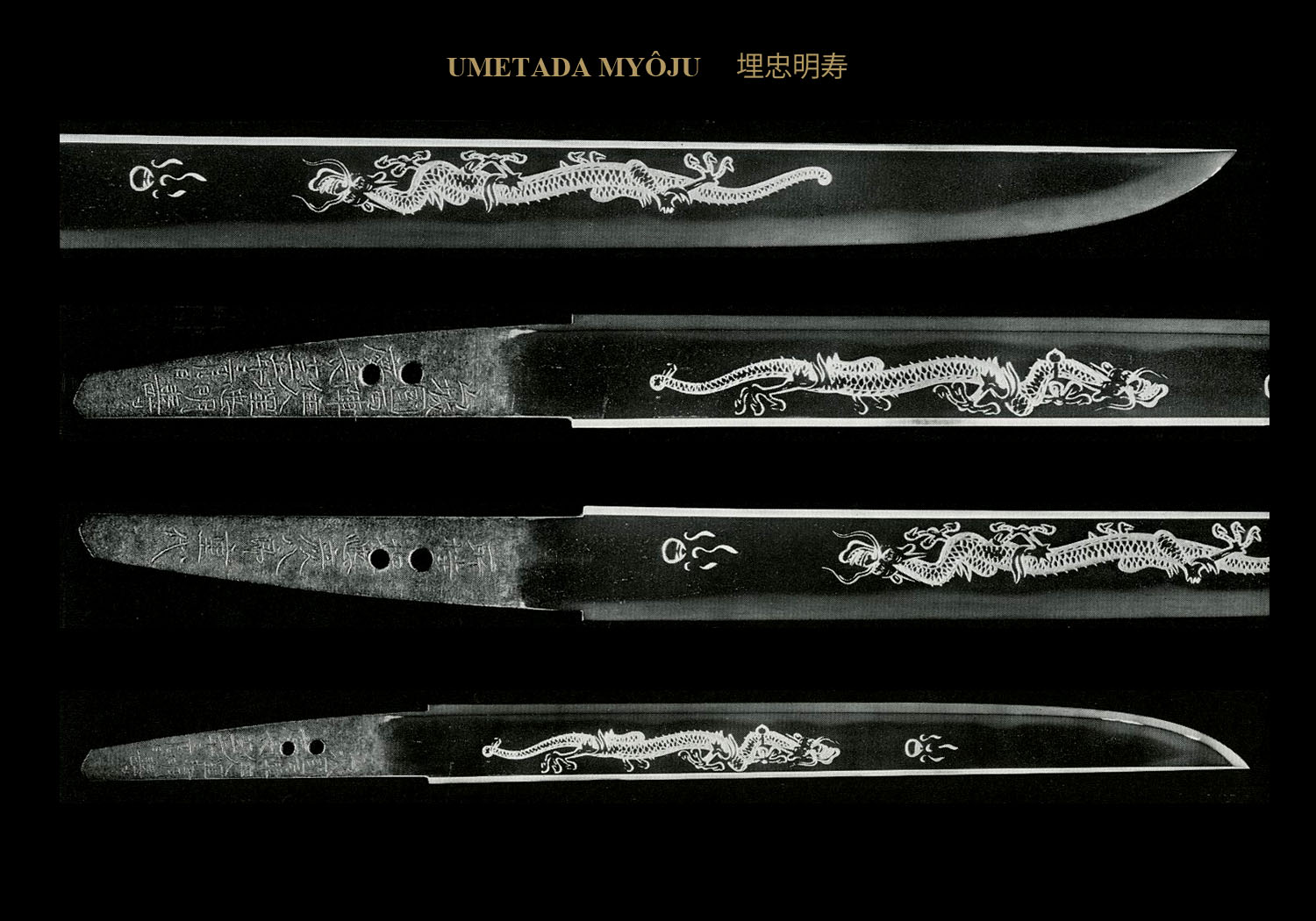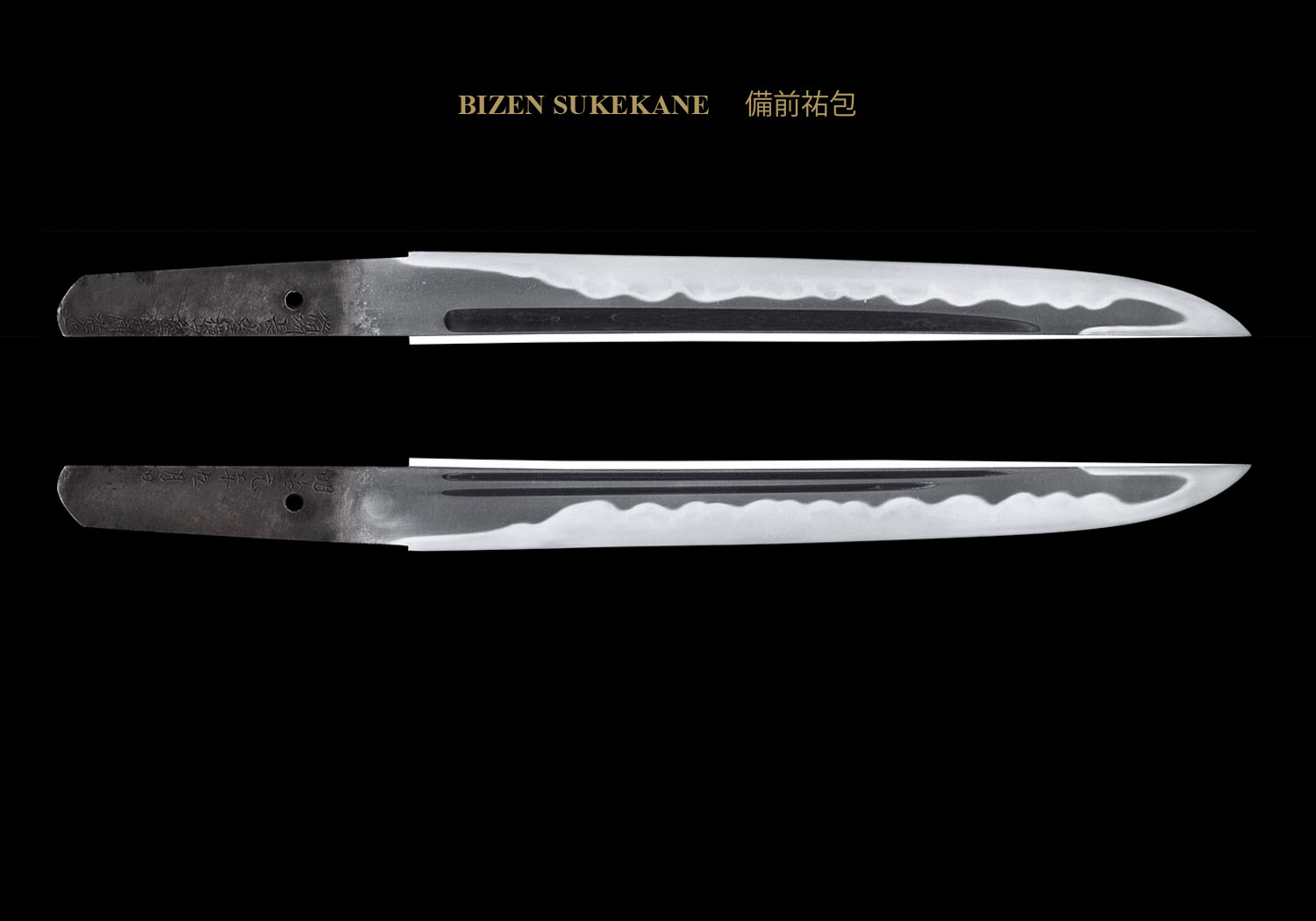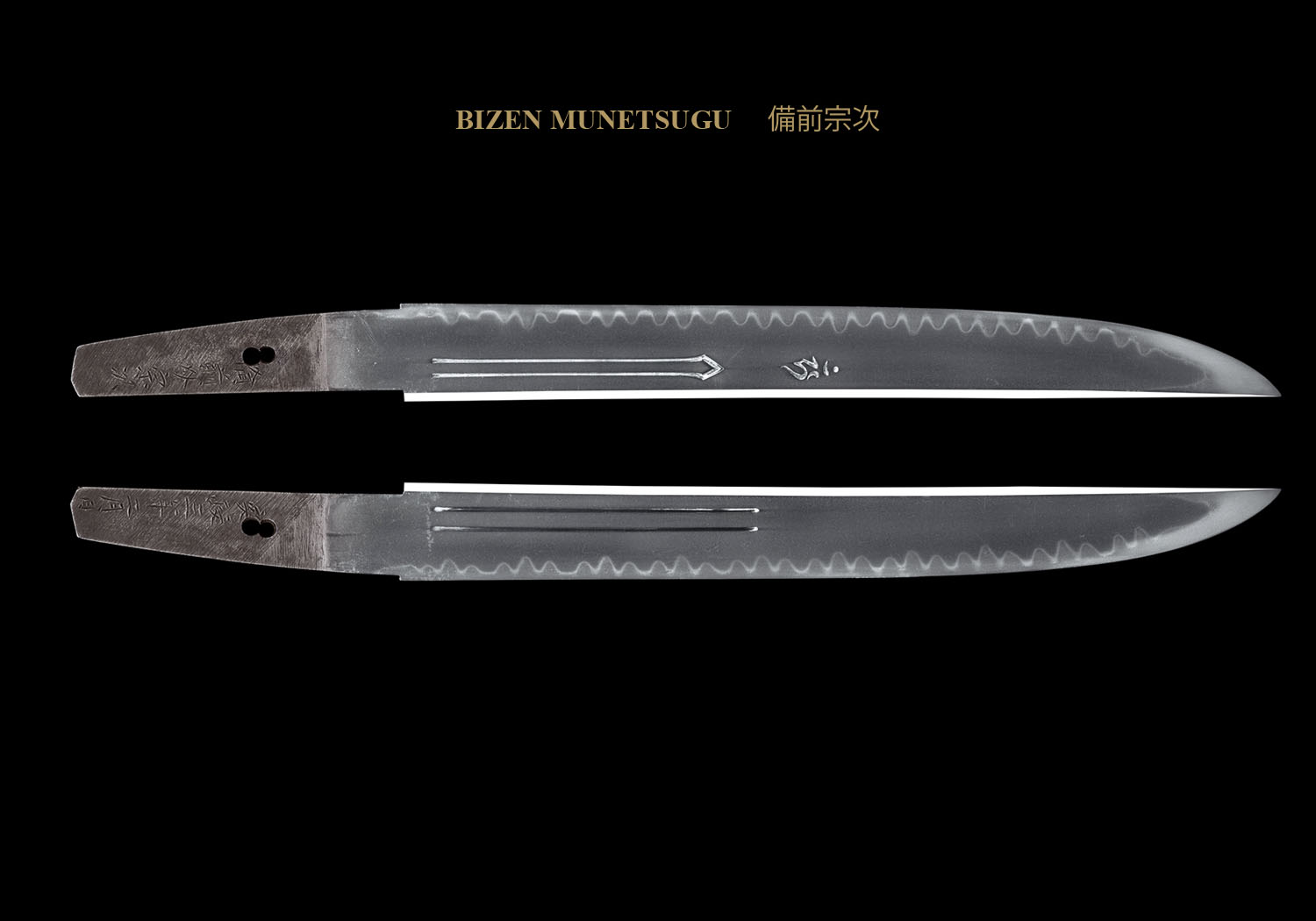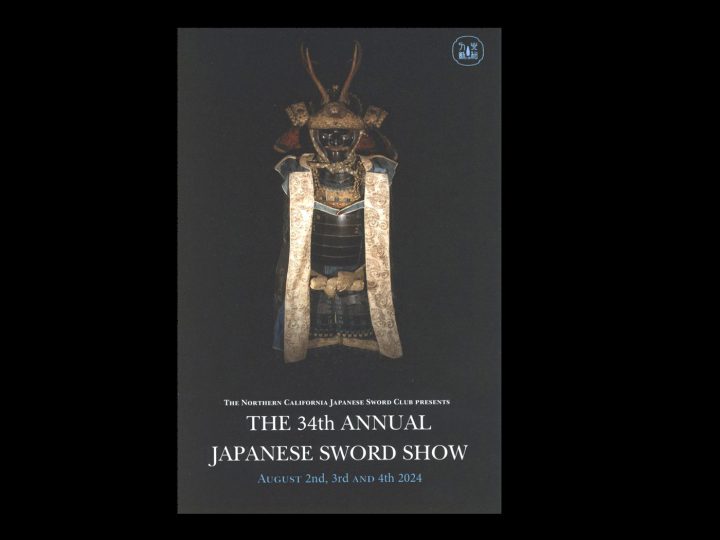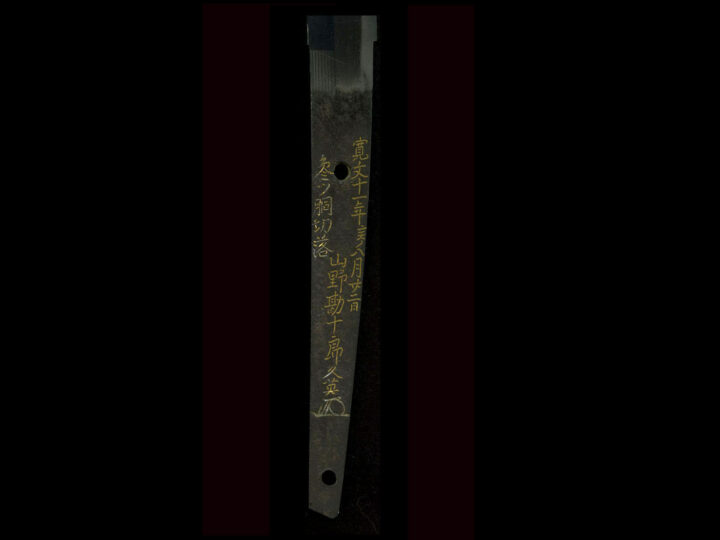
A tantô is traditionally described as being a Japanese sword of less than one shaku in length. This equates to 30.3 cm or a shade less than 12 inches. Tantô existed as early as the Heian Period. Most were utilitarian and made for practical use. Very few fine examples of these tantô remain today. Tantô came into widespread use after the two attempted invasions by the Mongol fleet in the latter part of the thirteenth century. Tantô production at that time was especially prolific in the Sôshû tradition of Sagami Province. This Middle Kamakura era marks the beginning of the production of high quality tantô being produced by top quality smiths. This shift by skilled smiths to the production of tantô occurred not only in the Sôshû tradition as mentioned; but also in other schools of sword production as will be explained later.
Tantô shapes varied greatly over the years from the Heian period to modern times. Prior to the Muromachi Period, we find hira-zukuri as the style of choice with the occasional exception of a kanmuri-otoshi tantô from Yamato or Yamashiro. Also, making their appearance in the late Kamakura Period was the unokubi-zukuri and katakiriha-zukuri tantô. Starting with the middle Muromachi Period we find new shapes of tantô such as moroha-zukuri and shobu-zukuri often produced. More rarely we find osoraku-zukuri tantô.
Prior to the Muromachi Period the word katana generally referred to a tantô. Long blades were called tachi or uchikatana. The koshigatana (waist-sword) was a sword worn at the waist. From the Kamakura Period on, it was used along with a tachi as a sashizoe when armor was worn and it had aikuchi mountings with no tsuba. This koshigatana was usually a tantô. From the beginning of the Nanbokucho Period onward, a wakizashi was sometimes used in place of a tantô.
Small tantô that were carried concealed in the robes were called futokoro katana (breast swords). They also used aikuchi mountings with a round kojiri and no kaeshitsuno (small hook on the side of the saya to hold it in the sash).
Tantô changed in size, shape, and function over the many eras. While, as we stated, one shaku is considered the maximum length for a tantô; as with every subject in the field of Japanese swords, we find exceptions. Most common are the sun-nobi (extended) tantô of the early Muromachi Period.
The following is a rough breakdown of various tanto characteristics, shapes, and some of the better-known tantô makers over the various eras:
HEIAN PERIOD – EARLY KAMAKURA PERIOD (987-1231)
Tantô existed as early as the Heian Period. Most were utilitarian and made for practical use. Very few fine examples of these tantô remain today. Given the natural rate of consumption and everyday use of these tantô, this is not surprising. Those surviving tend to be hira-zukuri with a ha-watari of less than 24 cm. They were uchi-zori and, as stated, very few survived.
In the early Kamakura Period, the most common tantô type is uchi-zori, but on occasion we find some with a slight sori. Some of the well known makers of these early tantô were the Awataguchi School 粟田口 (i.e. Kunitomo 国友), Hisakuni 久友, and Bungo Yukihira 豊後行平.
MID-KAMAKURA PERIOD (1232-1287)
Starting in the middle of the Kamakura Period we find a number of top quality smiths who specialized in the production of high quality tantô. Many of these tantô survive today. They still tended to be hira-zukuri like earlier tantô with a ha-watari of 21-26 cm. The average nagasa of these tantô tended to be on the high side of this scale at around 25-26 cm. Also during this time, kanmuri-otoshi tantô make their first appearance in the Yamato and Yamashiro Schools.
Some of the leading tantô smiths of this period were of the Awtaguchi School 粟田口 (Norikuni 則国, Kuniyoshi 国吉, Yoshimitsu 吉光), Rai Kunitoshi 来国寿俊, and the Shintogo school 新藤五 (Kunimitsu 国光 and Kunihiro 国弘). It should be noted that some of these smiths, particularly Awataguchi Kuniyoshi 粟田口国吉, were known to have made tantô in many various sizes and shapes. Examples of his various shapes are attached as appendix A.
LATE KAMAKURA PERIOD (1288-1333)
Tantô during this period tended to be on the long side, say about 26 cm. For the most part these tantô had no sori or even slight uchi-zori. These slightly longer and stronger tantô reflected the martial spirit of the late Kamakura Period when martial skills and battle necessities started dictating changes in sword shapes.
The hamon of the tantô of this period is like that of tachi except they lacked the chôji midare hamon. The gunome midare and suguha of such smiths as Nagamitsu and Kagemitsu is representative of the types of hamon produced on Bizen tantô. Yamashiro blades continued to show the suguha of former times for the most part, but we find exceptions in the midare hamon of some of the Rai smiths.
The smiths of Yamato produced tantô with a suguha based hamon that also contained gunome and hotsure. The Sôshû smiths most often produced tantô with a midare hamon. One notable exception is the fantastic suguha produced by arguably the greatest tantô maker of these times, Shintôgo Kunimitsu 新藤五国光.
While hira-zukuri was still the norm, new shapes were appearing in the various schools and it might be best to breakdown the various prominent tantô sword smiths by school and styles of tanto produced.
- Hira-zukuri tantô with a length of about 28cm, mu-zori, or very shallow sori. Width that is a little wider than the middle Kamakura Period: — The Rai 来 school (Kunimitsu 国光, Kunitsugu 国次, Sadamune 貞宗, e.g)
- Hira-zukuri tantô, with a mihaba (width) that is wide in comparison to the length. Thin kasane and a shallow sori: – Yukimitsu 行光
- Kanmuri otoshi-zukuri or unokubi-zukuri tantô with a thin kasane and mu-zori: — The Taima school 当麻, Ryokai 了戒, Shikkake Norinaga 尻懸則長, g.
- Katakiriha-zukuri with mu-zori or very shallow sori: — Sadamune 貞宗, Osafune Kagemitsu 長船景光, Takagi Sadamune 高木貞宗, e.g.
NANBOKUCHÔ PERIOD (1334-1389)
The period of war between the Northern and Southern Courts brought with it a new style in swords. While works of the previous periods tended to be elegant, we now find a movement toward a more exaggerated grandeur. This included the shapes of tantô. Tantô reached lengths of 30 cm and more. The line between what we call a sun-nobi tantô and a ko-wakizashi become somewhat blurred. Wakizashi came into being that tended to be broad and some exceed 40 cm in length. The kasane is thin and the sori is slight. This style is seen in the works of Akihiro 秋広 and Hiromitsu 広光 of the Sôshû tradition. The Sôshû tradition made famous by Masamune 正宗 became popular throughout the country.
Rarely we find small tantô of smiths such as Samonji 左文字, but they tended to be a miniature version of the typical wakizashi mentioned above.
Just as the shape of tantô in this period reflected the trend toward exaggerated grandeur, so did the temper of many of the leading smiths. Most notable was the hitatsura temper of the Sôshû smiths Hiromitsu 広光 and Akihiro 秋広. As a rule, we find many blades with a robust notare-midare hamon during this period.
Some of the leading sword smiths of the Nanbokuchô period:
- Hira-zukuri ko-wakizashi and o- tantô with a ha-watari of about 30 cm, rounded fukura, thin kasane, and saki-zori. – The Hasebe 長谷部 school (Kunishige 国重, Kuninobu 国信); Nobukuni 信国; the Masamune 正宗 school (Masamune 正宗, Sadamune 貞宗, Hiromitsu 広光, Akihiro 秋広); the Kanemitsu 兼光 school (Kanemitsu 兼光, Tomomitsu 倫光); the Omiya Bizen 大宮 school (Morikage 盛景, Morishige 盛重); and the Shizu 志津school ( Shizu 志津, Kanetomo 兼友, Kanetsugu 兼次).
- Other major sword groups that had outstanding smiths – The Rai 来 group; the Heianjo 平安城 group; the Sa 左 group of Chikuzen; The Fujishima 藤島 Group of Kaga; and others.
MUROMACHI PERIOD (1392-1572)
With the reconciliation of the Northern and Southern courts during the rule of the Ashikaga Shoguns, the Muromachi period began. This ushered in a golden age of culture and art, but is generally considered to be a low point in the history of quality sword production. While the court was unified, the country was torn by constant civil war particularly after the death of the third Ashikaga Shogun, Yoshimitsu.
Prior to the Muromachi Period the word katana generally referred to tantô. Long blades were called tachi or uchikatana. We find tantô surviving from this time that emulate the middle Kamakura style, i.e. blades of 21-24 cm with uchizori and others with the Nanbokucho sun-nobi length. After the middle of the Muromachi period, there appeared many rather broad, saki-zori blades of less than 36 cm.
Some of the leading tanto smiths of the early Muromachi period (1392-1428:
- Hira-zukuri tantô, ha-watari of less than 30 cm in length with mu-sori. – The Oei Bizen 応永備前 school (Yasumitsu 康光, Morimitsu 盛光); Nobukuni 信国.
- Kanmuri-otoshi-zukuri with mihaba in proportion and mu-sori. – Tegai Kanezane 手搔包真; the Nio 二王 school (Kiyonaga 清永, Kiyokage 清景).
Some of the leading tantô smiths of the later Muromachi period (1467-1572:
- Hira-zukuri, ha-watari of about 23-26 cm, uchi-zori, similar to the tantô of the Kamakura period. – The Sue-Seki 末関 school (Kanesada 兼定, Kanetsune 兼常); Osafune Sukesada 長船祐定; Shimada Yoshisuke 島田義助; and Tegai Kanekiyo 手搔包清.
- Hira-zukiri, ha watari of 20-23 cm, uchi-zori, extremely narrow sakihaba, very thick motokasane. – The Sue-Bizen 末備前 school (Sukesada 祐定 , Norimitsu 則光, Tadamitsu 忠光).
- Moroha-zukuri, ha-watari of 20-23 cm, shallow sori. – The Sue Bizen 末備前 school; the Sue-Seki 末関 school; The Sue Mihara 末三原
THE AZUCHI-MOMOYAMA PERIOD (1573-1643)
The final unification of Japan started with Oda Nobunaga when he entered Kyoto in 1568 on behalf of the final Ashikaga Shôgun, Yoshiaki. He first defeated the enemies of the Shogun and then wrested power from the Shôgunate for himself. Nobunaga’s unification efforts were cut short by his assassination in 1582 by Akechi Mitsuhide. One of Nobunaga’s generals, Toyotomi Hideyoshi took up the reins and continued with the unification. Tokugawa Ieyasu completed the final unification of Japan in 1615 with the summer campaign against Osaka castle.
The Momoyama period marks a major turning point in the history and development of Japanese swords. The end of the long period of civil wars also brought about the end of the need for vast quantities of mass-produced, low quality swords. There was a marked return to the development of artistic blades of beauty and strength reminiscent of the masterpieces of the Kamakura and Nanbokucho periods.
Along with the decrease in the required number of swords, the general style of fighting also changed. Gone were the mounted Samurai with their long tachi slung from the waist. Massive armies of Samurai fighting on foot were the norm, and these warriors wore their swords thrust edge upward through their sash. Accordingly, the longer, older tachi were shortened to accommodate this new style of wear. As the daisho of two swords became the style, the wakizashi pretty much replaced the tantô as the second sword of this daisho. Thus, the need for tantô greatly diminished and high-ranking Samurai probably used them primarily for wear around the home. The many existing high quality tantô from earlier periods filled this need and the production of new tantô was a low priority for sword smiths.
Another important social change occurring around this time was the shift of sword production from areas where quality ore was available to the castle towns that developed throughout the country. Thus, the five Koto schools died out or were diluted with smiths moving to the new economic centers of the Castle towns to do their production. Tantô were produced in limited numbers and some very skilled smiths ushered in the Shintô era of sword making. One of the most famous was Umetada Myoju (埋忠明寿) who is considered to be the founder of the Shintô sword making tradition.
Some of the leading ko-wakizashi and tanto smiths of the Momoyama period:
- Hira-zukuri ko-wakizashi and tantô with a wide mihaba and saki-zori. This type of blade was an imitation of the sugata of the Nanbokuchô period, but the kasane is thicker, the saki-zori is strong, and the fukura is much more rounded. – Umetada Myoju 埋忠明寿; the Horikawa 堀川 school (Kunihiro 国広, Kuniyasu 国安, Kunimichi 国路, and Kunisada 国貞); Etchu no Kami Masatoshi 越中守正俊; Tadayoshi I 忠吉; Yasutsugu I 康継; Higo Daijo Sadakuni 肥後大掾貞国; and Kanewaka 兼若.
- Katakiriha-zukuri tantô with a ha-watari of about 30 cm, a wide mihaba and shallow sori. – Umetada Myoju 埋忠明寿; the Horikawa 堀川 school; Tadayoshi I 忠吉; Yasutsugu I 康継 ; and Higo Daijo Sadakuni 肥後大掾貞国.
EDO PERIOD (1644-1876)
The Edo period marks a timeline of approximately 250 years of peace under the Tokugawa Shogunate rule. The seat of government was moved to Edo (modern Tôkyo) giving this period its name. Just as the Momoyama period may be called “the age of revival” with swords harkening back to the great masterpieces of the Kamakura and Nanbokucho eras; the Edo period marked an extended period of peace where swords were produced with hamon of a florid richness never seen before. This taste was reflected in many tantô also.
Also, as with the immediately prior period, tantô production was sparse as the demand was low. Unfortunately, the quality of swords started a steady slow decline as the period of peace reigned and military needs decreased. The desires of the rising merchant class created a need for wakizashi (they were not allowed to carry katana), thus producing and inordinate number of swords of this type.
There were exceptional smiths during this period, to be sure, but they did not exist in the great numbers that we found in the prior eras of top quality sword production.
Late in the Edo period a sort of sword revival got underway thanks to the smith, Suishinshi Masahide (水心子正秀). He advocated for a return to the quality swords of the past and was instrumental in fermenting a movement to that end. He was an outstanding smith who attracted other able smiths to his cause. Thus, in what we call the Shinshintô era of sword production we find many fine examples produced by some of the most talented smiths in history. Tantô are more numerous in this latter part of the Edo period and their style represents a revival of the Kamakura and Nanbokuchô eras.
Some of the leading tanto smiths of the Edo period:
- Early Edo: The Yamashiro 山城 group ( Kinmichi 金道, Yoshimichi 吉道, Masatoshi 正俊, Kunikiyo 国清); the Mushashi 武蔵 group (Yasutsugu 康継, Kotetsu 虎徹); the Echizen 越前group (Yasutsugu 康継, Sadatsugu 貞継,); the Hizen 肥前 group (Tadahiro 忠広, Masahiro 正広, Tadakuni 忠国, Tadayoshi
- 忠吉 ); the Satsuma 薩摩 group (Masakiyo 正清, Yasuyo 安代, Masayoshi 正幸); and others.
- Late Edo: Hira zukuri tantô with a ha-watari of 24-27 cm, proportional mihaba, and shallow uchi-zori. – The Musashi 武蔵 region smiths (Masahide 正秀, Naotane 直胤, Masayoshi 正義, Tsunatoshi 綱俊, Munetsugu 宗次, Korekazu 是一, Nobuhide 信秀, and others); The Satsuma 薩摩 group (Motohira 元平, Masayuki 正幸, etc.).
THE MEIJI/TAISHO PERIOD (1876-1925)
In the ninth year of Meiji (1876) the government abolished the wearing of swords. This was the death knell for the true Samurai sword. Many tantô were produced during and after the start of the Meiji period but they are mere shadows of the great swords that came before.
Tantô production in the Meiji period continued the smallest of scales, primarily to create tantô for state ceremonies, gifts and dedications for the Imperial Household. These were blades that were never meant for public “consumption”.
This was a time of the opening of Japan to the West and the demand for Japanese swords was not one of practical use. Rather it was a souvenir or oddity sought out by the Europeans. We find outstanding koshirae produced during these times for the export market and most of the tantô found in these high art fittings were little more than metal tsunagi used to hold the mounts together. The age of the making of great tantô was, for all intents and purposes, over.


